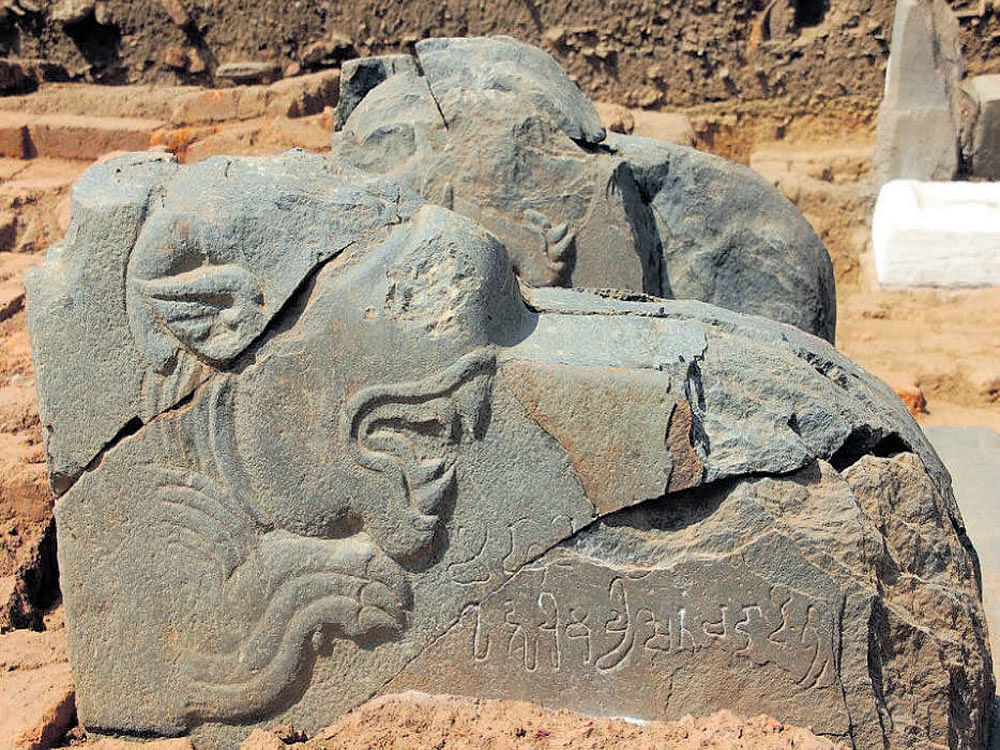
The stone inscription (dated 370 CE) found at Talagunda near Shiralakoppa in the taluk during excavation by the Archaeological Survey of India (ASI) in 2013-14 is now said to be the earliest Kannada inscription. This is indeed something to cheer about for people of the district in general and of Shikaripur taluk in particular.
The Halmidi inscription - dated between 450 CE and 500 CE - was earlier believed to be the oldest-known Kannada inscription.
A review of Indian Archaeology-2013-14, published by the Director General of ASI in 2016, said the inscription found in the North side balustrade of the Pranaveshwara temple, in all probability, dates back to 370 CE. It is a seven-line slanted Brahmi script written left to right. The use of Kannada script along with Sanskrit makes it a dual-language inscription. The inscription records gifts of land to a boatman namely Vaji Naga, who belonged to the Boygara family, by a certain Halami of Pulindage.
Speaking to Deccan Herald, M Navin Kumar, president of the Shiralakoppa-based Kannada Research and Development Foundation, said there was a need to rewrite history books and mention that the Talagunda inscription was the oldest-known Kannada inscription and not Halmidi.
“Keshava Sharma, an official who was part of the excavation team, had predicted that it could be older than Halmidi inscription. But there was no official communication then. Now, I am told that it has been officially declared as the earliest Kannada inscription.”
The trial excavation was carried out in 2013 under the direction of M Nambirajan of the ASI at the temple complex. Two sets of copper plates of the Kakatiya period and 13 gold coins of Ganga period were also found during the trial excavation. An undated, fragmented and worn-out inscription was found on the left side balustrade (Simhakatanjana) of the temple during the second excavation.
The Archaeological Survey of India has reportedly directed Bengaluru circle officials to carry on excavation at Talagunda Shikaripur taluk for another five years.